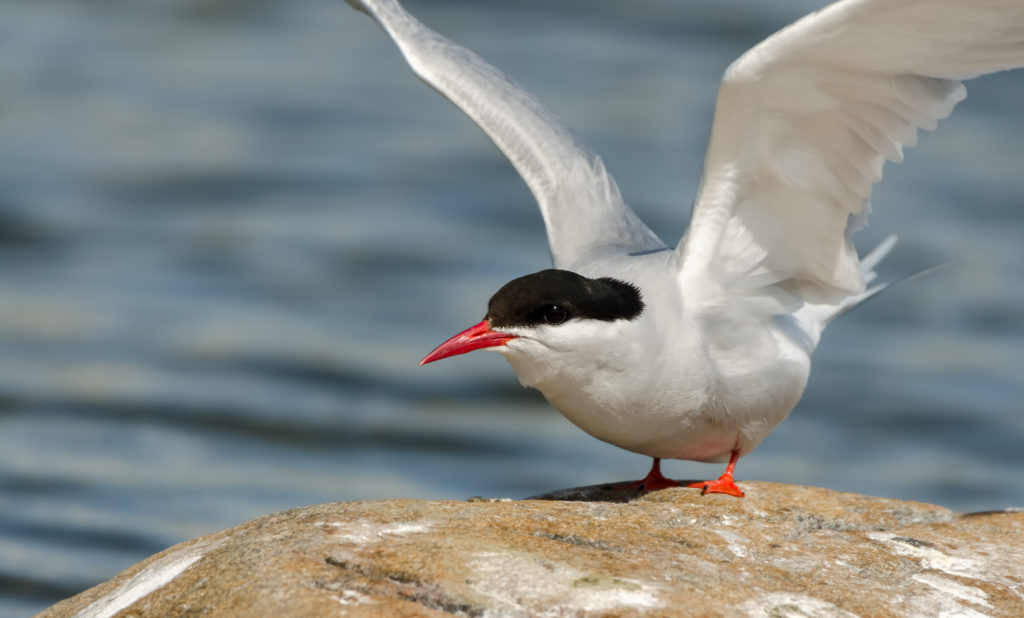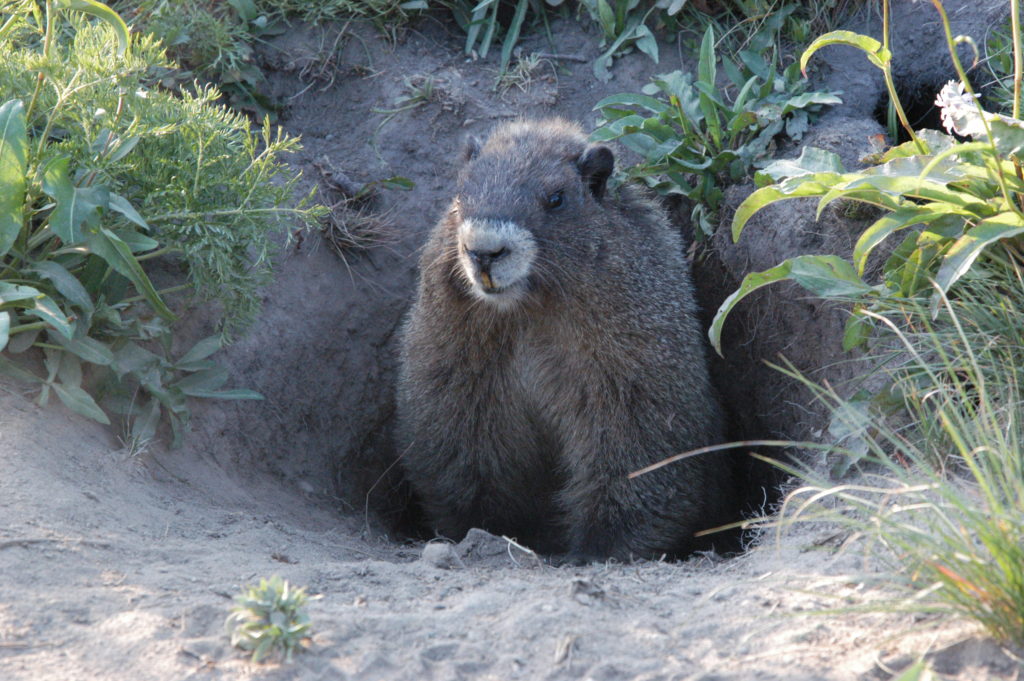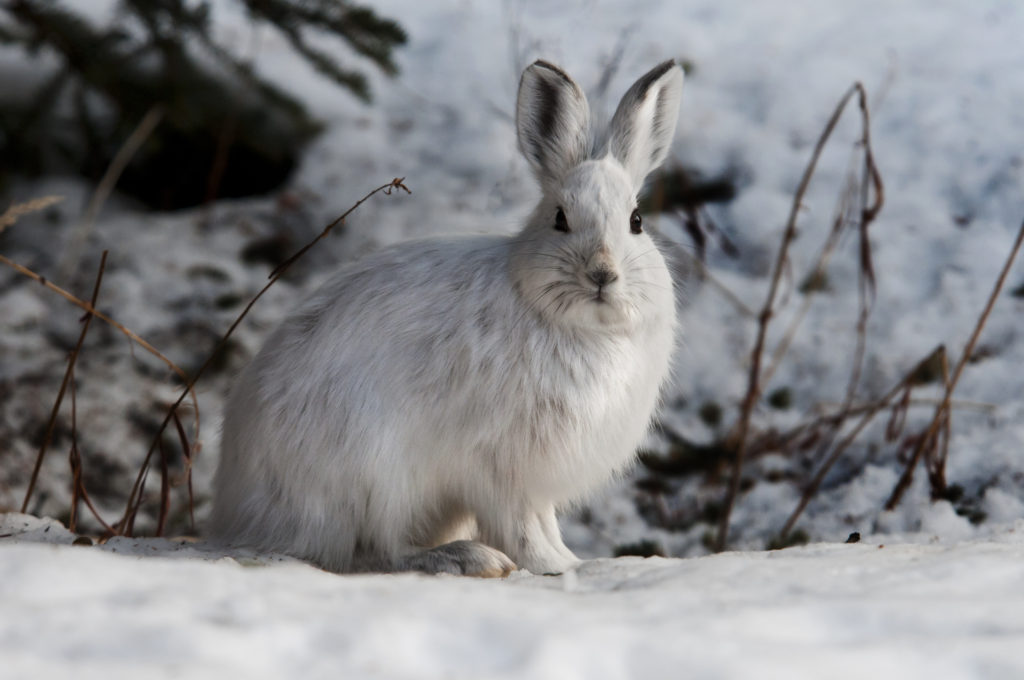December 20 is the earliest date on which the winter solstice can occur (more commonly on December 21 or 22, but we need a topic for December 20). It is the shortest day of the year, and consequently has had special meaning to humans throughout our history (people today celebrate the summer solstice at Stonehenge in England, but ancient people celebrated the winter solstice there). The winter solstice is variously called “mid-winter” or the first day of winter, depending on the country and custom.

But that doesn’t matter for our purposes—suffice to say that when the winter solstice comes around, never feat—it is winter! And nature knows this all too well, so let’s reflect a bit on how animals in the far north respond to winter. Scientists have categorized the general ways of surviving winter into three strategies, exemplified here by a champion of each.
The first is to “get out of Dodge,” or in this case, winter. Many animals migrate to escape the rigors of winter. Birds, of course, are the most obvious, and the grand champion is the Arctic tern. Arctic terns (Sterna paradisaea) spend the summer in the Arctic, where they breed, but head south for the winter, really far south. They fly to Antarctica and back, an round-trip of about 24,000 miles! In fact, they are avoiding two winters each year, one in the north and one in the south. Other animals make less dramatic migrations. Elk, for example, move from high mountain elevations in summer to lower elevations in winter, where the snow isn’t so deep and forage is more available.

The second strategy is to hunker down and pretend winter isn’t happening, saving energy by going dormant. Different animals utilize various levels of dormancy, from simply digging dens and filling them with food, to the official state of hibernation. The yellow-bellied marmot (Marmota flaviventris), a high elevation relative of the squirrel, is the champion. It hibernates for as many as 200 days each year, from September or October through April or May, depending on the habitat. A colony of 10-20 individuals digs a common burrow that they line with grass. They fatten up in the fall and then cuddle together in the marmot version of grandma’s feather bed. A hibernating marmot reduces its body temperature as low as 41 degrees Fahrenheit, slows its heart to as low as 30 beats per minute (compared to 180 when not hibernating), and breathes only about twice per minute.

The third strategy is to just make do. Humans throw on another layer, insulated gloves and hats—and wild animals do the same. Mountain goats and many other grazing animals sport heavy undercoats made up of hollow hairs that insulate their bodies. The pika, a small rodent, has tiny ears and tail, proportioned to reduce heat loss. Many northern animals shed their brown summer coats for white fur or feathers, including ptarmigans, Arctic foxes and hares, giving them camouflage as either prey or predator. The snowshoe hare (Lepus americanus) is the champion, however, with thick stiff hair covering its large paws, allowing it to travel easily across deep snow on namesake “snowshoes.”
Nature has perfected these amazing responses to winter over a very long time. And that leads to the compelling question of sustainability: What will happen with global warming? We can imagine all sorts of bad impacts—like species coming out of hibernation too early and then falling victims to late winter storms. Less Arctic ice means shorter hunting seasons for polar bears—and we’ve seen the sickening photos of starving bears. The survival of prey animals, like ptarmigan and snowshoe hare, is also compromised because their molting from brown to white coats is triggered by day-length, not temperature. In a warming world, a white ptarmigan on bare ground is, figuratively, a sitting duck.
References:
Cornell Lab of Ornithology. Arctic Tern. Available at: https://www.allaboutbirds.org/guide/Arctic_Tern/overview#. Accessed December 9, 2019.
Elischer, Melissa. 2015. Animal adaptations for winter. Michigan State University Extension, December 10, 2015. Available at: https://www.canr.msu.edu/news/animal_adaptations_for_winter. Accessed December 9, 2019.
National Park Service. Marmot, Rocky Mountain National Park. Available at: https://www.nps.gov/romo/learn/nature/marmot.htm. Accessed December 9, 2019.
National Park Service. Snowshoe Hare. Available at: https://www.nps.gov/articles/snowshoe-hare.htm. Accessed December 9, 2019.
National Snow & Ice Data Center. All About Snow – Snow and Animals. Available at: https://nsidc.org/cryosphere/snow/animals.html. Accessed December 9, 2019.
Peterson, Christine. 2018. How Climate Change Affects Winter Wildlife. The Nature Conservancy, December 06, 2018. Available at: https://www.nature.org/en-us/about-us/where-we-work/united-states/idaho/stories-in-idaho/winter-animal-adaptations/. Accessed December 99, 2019.

